Typical values at TA = +25°C, ADC Sampling Rate = 2949.12 GHz. Default conditions: output sample rate = 491.52MSPS (decimate by 6), PLL clock mode with fREF = 491.52MHz, AIN = –3 dBFS, DSA setting = 4 dB.
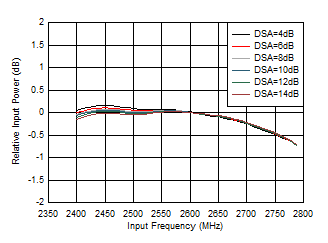
| With matching, normalized to power at 2.6 GHz for each DSA setting |
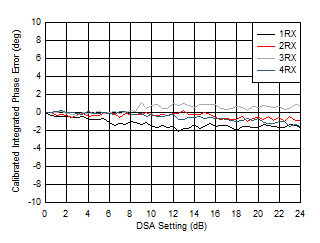
| With 2.6 GHz matching |
| Integrated Phase Error = Phase(DSA Setting) – Phase(DSA Setting = 0) |
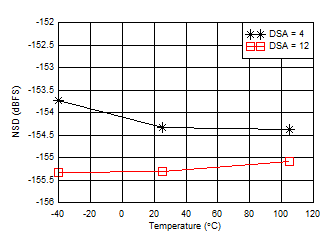
| With 2.6 GHz matching, 12.5-MHz offset from tone |
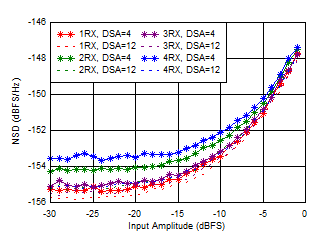
| With 2.6 GHz matching, 12.5-MHz offset from tone |
|
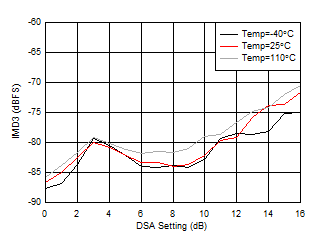
| With 2.6 GHz matching, each tone –7 dBFS, tone spacing = 20 MHz |
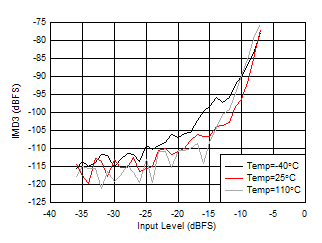
| With 2.6 GHz matching, tone spacing = 20 MHz, DSA = 12 dB |
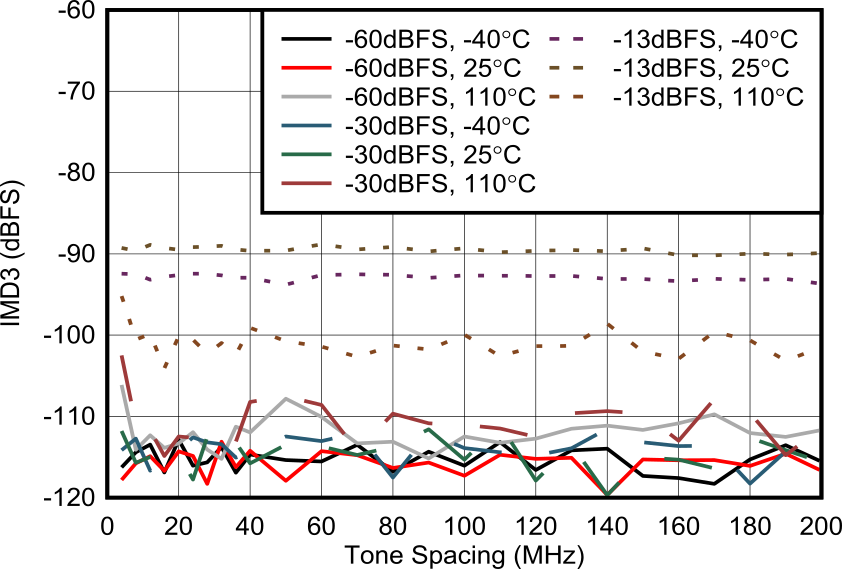 Figure 6-123 RX IMD3 vs Tone Spacing at 2.6 GHz (Ext.
Clock)
Figure 6-123 RX IMD3 vs Tone Spacing at 2.6 GHz (Ext.
Clock)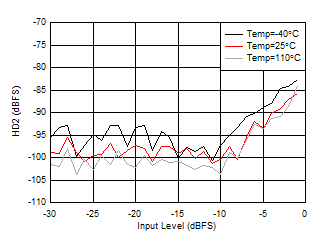
| With 2.6 GHz matching, DDC bypass mode (TI only mode for characterization) |
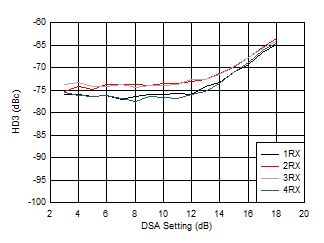
| With 2.6 GHz matching, DDC bypass mode (TI only mode for characterization) |
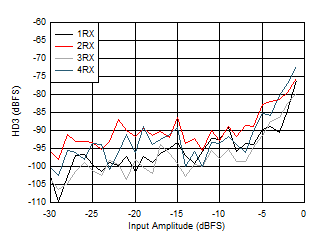
| With 2.6 GHz matching, DDC bypass mode (TI only mode for characterization) |
 Figure 6-131 RX HD3 vs Input Level and Temperature at 2.6
GHz
Figure 6-131 RX HD3 vs Input Level and Temperature at 2.6
GHz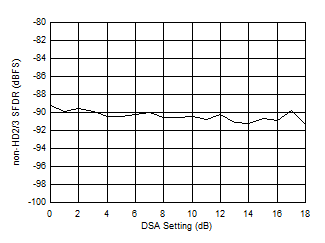 Figure 6-133 RX Non-HD2/3 vs DSA Setting at 2.6 GHz
Figure 6-133 RX Non-HD2/3 vs DSA Setting at 2.6 GHz
| With
2.6 GHz matching, –7 dBFS each tone, 20-MHz tone
spacing, all supplies at MIN, TYP, or MAX recommended
operating voltages |
Figure 6-135 RX
IMD3 vs Supply and Channel at 2.6 GHz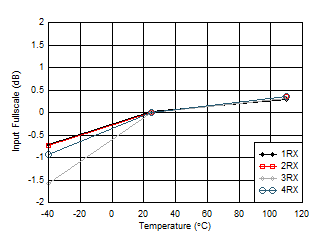
| With 2.6 GHz matching, normalized to fullscale at 25°C for each channel |
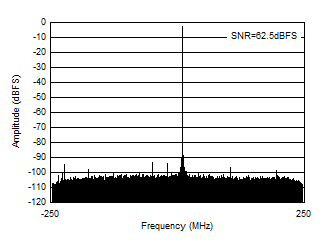
| With 2.6 GHz matching, fIN = 2610 MHz, AIN= –3 dBFS |
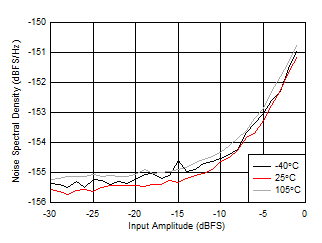
| With 2.6 GHz matching, DSA Setting = 12 dB, 12.5-MHz offset from tone |

| 50-MHz
offset from tone, external clock mode |
|
Figure 6-118 RX Noise Spectral Density vs Input Amplitude at 2.61
GHz (Ext. Clock)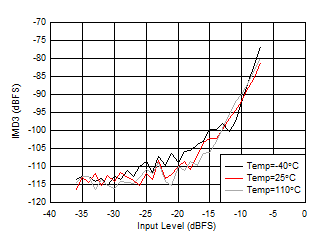
| With 2.6 GHz matching, tone spacing = 20 MHz, DSA = 4 dB |
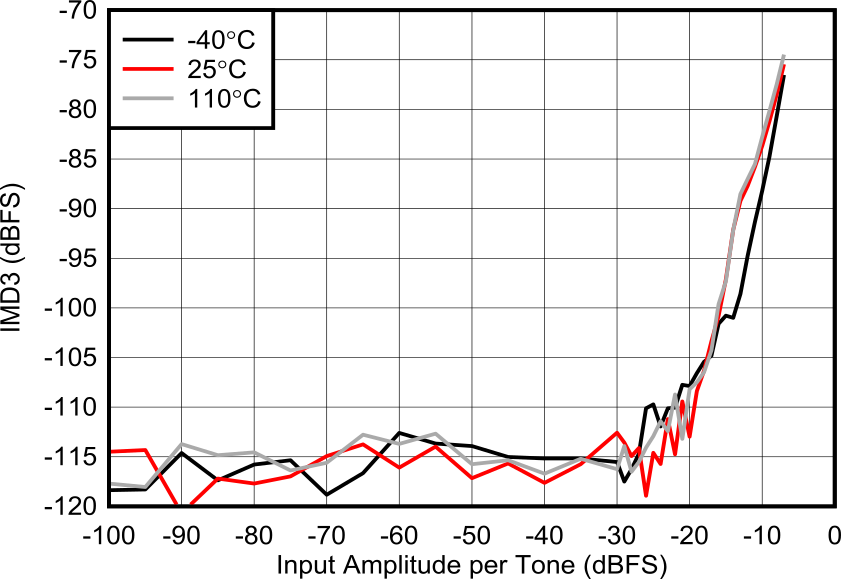
| Tone
spacing = 50 MHz, External clock mode |
Figure 6-122 RX IMD3 vs Input Level at 2.6 GHz (Ext.
Clock)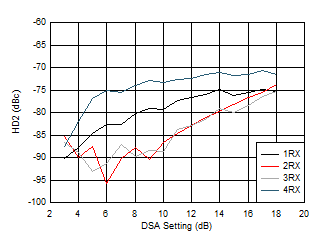
| With 2.6 GHz matching, DDC bypass mode (TI only mode for characterization) |
 Figure 6-126 RX HD2 vs Input Level and Temperature at 2.6
GHz
Figure 6-126 RX HD2 vs Input Level and Temperature at 2.6
GHz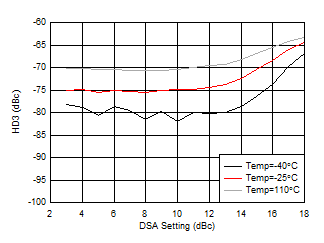
| With 2.6 GHz matching, DDC bypass mode (TI only mode for characterization) |
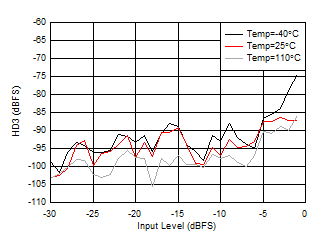
| With 2.6 GHz matching, DDC bypass mode (TI only mode for characterization) |
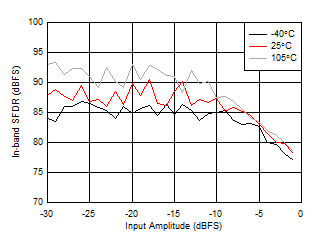
| With 2.6 GHz matching, decimate by 4 |
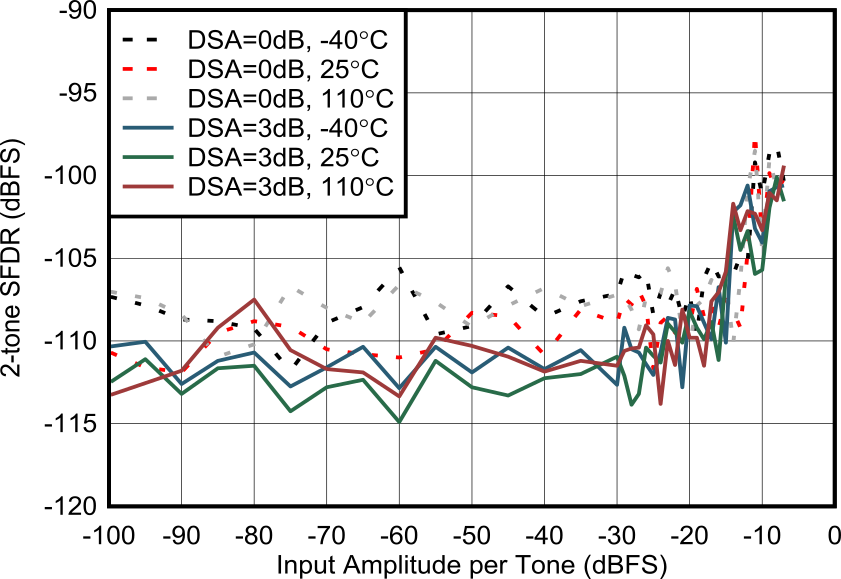
| External clock mode, 50MHz tone spacing, excluding
3rd order distortion |
Figure 6-134 RX 2-tone SFDR vs Input Amplitude at 2.6 GHz
| With
2.6 GHz matching, 12.5-MHz offset, all supplies at MIN,
TYP, or MAX recommended operating voltages |
Figure 6-136 RX
Noise Spectral Density vs Supply and Channel at 2.6 GHz
























